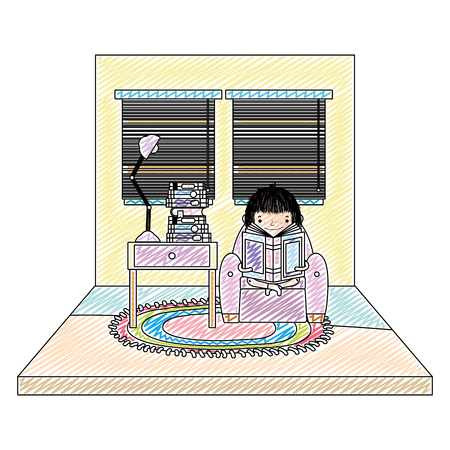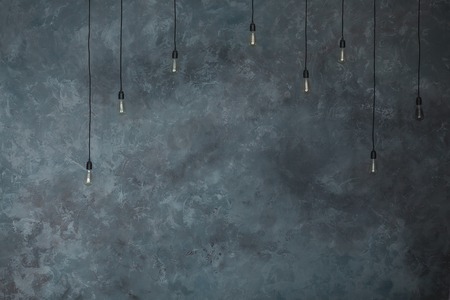Understanding the Importance of Lighting in a UK Home
Lighting plays a pivotal role in shaping the atmosphere, functionality, and overall appeal of every room within a UK home. British properties often feature unique architectural elements, such as bay windows, high ceilings, and period details, which require thoughtful illumination to highlight their character while ensuring practical use. The notoriously variable British weather means natural daylight can be limited, especially during long winter months, making artificial lighting even more crucial. Selecting the right lighting not only transforms the mood of each space—from cosy and inviting living rooms to efficient and focused kitchens—but also contributes to energy efficiency, a vital consideration given rising utility costs. Furthermore, well-planned lighting enhances the value of your property by creating a welcoming ambiance and showcasing its best features. Understanding these factors allows homeowners to make informed choices that complement both traditional and modern British interiors.
2. Tailoring Lighting to Traditional and Modern UK Interior Styles
Choosing the right lighting for your UK home involves more than just selecting a functional light source. With such a rich architectural heritage, homes across the UK—from Victorian terraces to contemporary flats—demand thoughtful consideration when it comes to matching lighting styles with interiors. Below is an overview of how you can select period-appropriate fixtures or modern alternatives that enhance your property’s character.
Understanding Your Property Type
| Property Type | Typical Features | Recommended Lighting Styles |
|---|---|---|
| Victorian Terrace | High ceilings, ornate mouldings, sash windows | Pendant lights with glass shades, chandeliers, wall sconces with brass or bronze finishes |
| Edwardian Semi-Detached | Large bay windows, picture rails, wooden floors | Tiffany lamps, multi-arm ceiling lights, traditional lanterns |
| 1930s Suburban Home | Coved ceilings, stained glass features, Art Deco touches | Art Deco-inspired fittings, geometric pendant lights, uplighters |
| Modern Flat/Apartment | Open-plan layouts, minimalistic decor, large windows | Recessed spotlights, LED strips, sleek floor lamps, statement pendants in bold designs |
| Barn Conversion/Cottage | Exposed beams, stone walls, rustic charm | Industrial pendants, wrought iron chandeliers, vintage filament bulbs, lantern wall lights |
Selecting Period-Appropriate Fixtures vs. Modern Alternatives
If you live in a period property such as a Georgian townhouse or Victorian terrace, opting for traditional light fittings—like antique-style chandeliers or frosted glass pendants—can help preserve the historical feel while providing effective illumination. For those who prefer a contemporary twist or have modernised interiors within older shells, consider blending old and new: pair classic ceiling roses with minimalist LED fixtures or introduce industrial-style lamps to add contrast without clashing.
Key Tips for Mixing Styles:
- Consistency: Keep finishes consistent (e.g., all brass or all chrome) across fixtures for a cohesive look.
- Focal Points: Use statement pieces like oversized pendants in entryways or above dining tables to bridge styles.
- Layered Lighting: Combine ambient (main lights), task (reading lamps), and accent (wall washers) lighting for flexibility and atmosphere.
- Dimmable Options: Install dimmer switches throughout to suit different moods and settings—a practical choice for every British home.
The Practical Approach for UK Homes:
No matter your home’s age or design era, always consider ceiling height and room proportions before installing larger fixtures. In typical UK terraced homes with lower ceilings, flush mounts or semi-flush fittings work best. In open-plan or loft-style spaces common in new developments, embrace dramatic hanging pendants or track lighting for maximum impact.

3. Room-by-Room Guidance: Selecting the Best Lighting Solutions
Kitchens: Task-Oriented and Flexible Lighting
The kitchen is often considered the heart of the UK home, serving as both a cooking and social space. For effective kitchen lighting, prioritise bright, focused task lighting above worktops, sinks, and hobs. Under-cabinet LED strips or spotlights are ideal for illuminating food preparation areas. Consider ceiling-mounted fittings or adjustable downlights for general lighting, ensuring even coverage across typically compact UK kitchens. Add dimmable pendants or wall lights over dining nooks to create ambience when entertaining.
Lounges: Layered Lighting for Relaxation and Entertaining
Lounge areas in UK homes benefit from layered lighting schemes that allow flexibility between relaxation and entertaining. Start with a central pendant or semi-flush ceiling light for overall illumination. Supplement this with table lamps and floor lamps placed near seating for reading or cosy evenings in. Wall sconces can add warmth to alcoves or beside fireplaces, while dimmer switches enable you to adjust ambience according to the time of day or mood.
Bedrooms: Soothing and Practical Illumination
Bedrooms require a calming atmosphere paired with practical solutions for tasks like dressing or reading. Ceiling lights provide general coverage, but bedside table lamps or wall-mounted reading lights offer targeted illumination without disturbing your partner. Consider low-wattage bulbs with warm colour temperatures to promote restful sleep. If your bedroom doubles as a workspace or dressing area, incorporate adjustable desk lamps or illuminated wardrobe fittings.
Bathrooms: Bright, Safe and Stylish Lighting
Safety is paramount in bathroom lighting. Choose IP-rated fittings suitable for damp environments, especially around baths and showers. Ceiling-mounted LED panels or recessed downlights deliver bright, shadow-free illumination crucial for grooming tasks. Accent mirror lighting – such as vertical sconces on either side – reduces shadows on the face, making morning routines easier. In smaller UK bathrooms, opt for compact fittings that maximise available space while maintaining style.
Hallways: Welcoming and Functional Solutions
Hallways in British homes are often narrow and can feel gloomy without adequate lighting. Install flush-fitting ceiling lights or slimline wall sconces to brighten long corridors without causing obstructions. Motion sensor lights are particularly practical near entrances, offering instant illumination when arriving home with shopping bags or children in tow. Use warm bulbs to create a welcoming first impression for visitors.
4. Considering Energy Efficiency and Sustainability
When selecting lighting for your UK home, energy efficiency and sustainability should be top priorities. With rising energy costs and a growing awareness of environmental impact, making informed choices can help you save money and reduce your carbon footprint. Here’s how to balance great lighting with responsible energy use:
LED Bulbs: The Modern Standard
LED (Light Emitting Diode) bulbs have become the go-to option for British households due to their long lifespan, low energy consumption, and minimal maintenance needs. Unlike traditional incandescent or halogen bulbs, LEDs convert most of their energy into light rather than heat, which makes them highly efficient.
| Bulb Type | Average Lifespan | Energy Usage (W) | Annual Cost* (£) |
|---|---|---|---|
| Incandescent | 1,000 hours | 60W | £8.76 |
| Halogen | 2,000 hours | 42W | £6.13 |
| LED | 15,000+ hours | 7-10W | £1.46 |
*Estimated annual cost based on 3 hours/day at 34p per kWh (Ofgem cap as of early 2024).
British Energy Standards and Labelling
The UK has strict regulations regarding lighting efficiency. When shopping for bulbs or fixtures, look for the British Standard Kite Mark and EU/UK energy labels. The new scale ranges from A (most efficient) to G (least efficient). Always aim for products rated A or B to ensure lower running costs and compliance with local standards.
Smart Lighting Solutions for Greater Savings
Smart lighting systems—such as those compatible with Amazon Alexa, Google Home, or Apple HomeKit—allow you to control lights remotely, set schedules, and adjust brightness or colour temperature according to your needs. Many smart bulbs also feature motion sensors or daylight sensors to further minimise unnecessary usage.
| Feature | Benefit in a UK Home |
|---|---|
| Dimming Functionality | Lowers energy use during evenings or when full brightness isn’t needed. |
| Zoning & Scheduling | Keeps rooms lit only when occupied; ideal for busy family homes. |
| Remote Access via App | Adds security and convenience—perfect for holidays or late returns. |
| Sensors (Motion/Daylight) | Avoids wasted electricity in corridors, utility rooms, or bathrooms. |
The Environmental Impact: Doing Your Bit for the Planet
By switching to LED bulbs and adopting smart controls, the average UK household can cut lighting-related energy consumption by up to 80%. This not only means lower bills but also contributes towards national targets for reducing greenhouse gas emissions. Responsible lighting choices are an easy win for both your wallet and the environment.
5. Practical Installation and Maintenance Tips for UK Homeowners
When selecting and installing lighting throughout your UK home, safety should always be your top priority. The electrical system in the UK operates at 230V mains power, which can be hazardous if not handled correctly. Here’s what you need to know before getting started:
Safety Considerations for Home Lighting
Always switch off the main power at the consumer unit (fuse box) before attempting any installation or maintenance work on light fittings. Use a voltage tester to confirm that circuits are dead. Avoid working in damp or wet conditions and ensure your hands are dry when handling any electrical components. Keep children and pets away from the work area to prevent accidents.
Understanding 230V Mains Power
UK homes use a higher voltage than many other countries, making proper wiring and secure connections essential. If you’re replacing a simple pendant or changing a bulb, these are usually safe DIY tasks if you follow instructions carefully. However, tasks like installing downlights, fitting dimmer switches, or upgrading bathroom lighting often involve complex wiring and additional safety regulations.
When to Call a Qualified Electrician
If your project involves new wiring, changes to existing circuits, work in bathrooms or kitchens, or if you feel uncertain at any stage, it’s essential to hire a Part P registered electrician. This is a legal requirement for certain types of electrical work in UK homes, ensuring installations comply with the latest British Standards and building regulations.
Ongoing Lighting Maintenance
To keep your lighting effective and safe long-term, perform regular checks on all fittings for signs of wear, discolouration, or loose connections. Replace bulbs with those of the correct wattage and type recommended by the manufacturer. Clean fixtures gently using a dry cloth to avoid dust build-up, which can reduce efficiency or pose fire risks. For outdoor lights, inspect for water ingress and replace seals as necessary. Scheduling an annual inspection by a qualified electrician helps spot potential problems before they become hazards.
Summary
Proper installation and routine maintenance not only enhance the effectiveness of your home lighting but also protect your household against electrical faults and accidents. Always prioritise safety and don’t hesitate to consult professionals for peace of mind.
6. Maximising Natural Light Throughout the Year
Making the most of natural light is essential in UK homes, where grey skies and short winter days are common. Complementing artificial lighting with smart design choices can help create brighter, more inviting spaces year-round. Here’s how you can enhance daylight in every room:
Use of Mirrors for Light Reflection
Strategically placing mirrors opposite or adjacent to windows helps reflect daylight deeper into the room, doubling the perceived brightness without any extra energy costs. Large wall mirrors, mirrored furniture, or even decorative mirror panels can all contribute to amplifying available sunlight.
Optimise Window Treatments
Heavy curtains and dark blinds can block valuable daylight. Opt for lighter fabrics such as voile or linen that allow diffused sunlight to filter through while maintaining privacy. For a truly British touch, consider classic shutters or roller blinds that can be adjusted easily throughout the day.
Select Light-Enhancing Décor
Pale walls, ceilings, and floors—think off-whites, soft greys, or gentle pastels—help bounce light around the room. Glossy finishes on paint or tiles can also reflect more light than matte surfaces. Choose furnishings in lighter shades and incorporate metallic or glass accents to further lift your space.
Integrate Artificial Lighting Thoughtfully
Layered lighting is key when natural daylight is limited. Use a combination of ceiling lights, wall sconces, and floor lamps to mimic the warmth and brightness of natural light during darker months. Opt for bulbs with a colour temperature close to daylight (around 5000K) for the most authentic effect.
By blending thoughtful design with practical lighting choices, you can ensure every room in your UK home feels airy and welcoming—whatever the weather outside.


